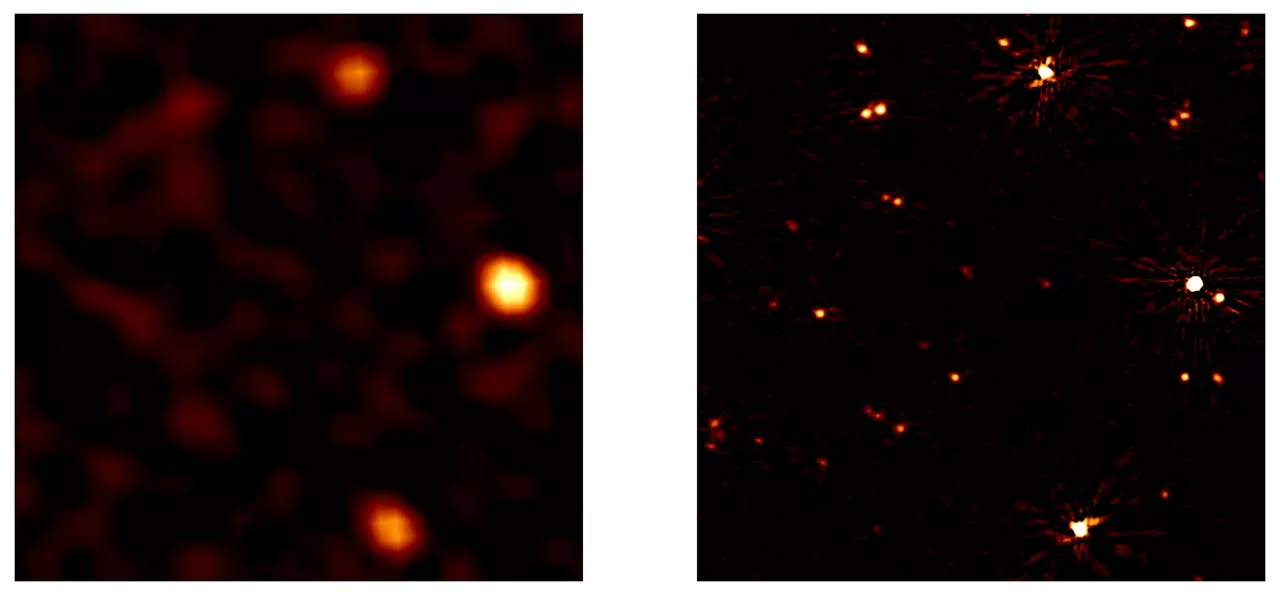Space and astronomy news
Left shows an image of a piece of sky observed with the hitherto best calibration technique. Right shows the same piece of sky with the new technique. More detail is visible, and what were once large, blurry patches now appear as single points. LOFAR/Groeneveld et al.
The technique was developed by an international team of researchers led by astronomers from Leiden University in the Netherlands.said Christian Groeneveld from Leiden University, who led the research. “We hoped that we could also extend this technique to lower frequencies, below 30 MHz,” said, Reinout van Weeren, also from Leiden University, who came up with the idea. “And we succeeded.”
Then, they split up their field of view into several smaller “facets” and self-calibrated each facet individually, against the calibrator object. “This yields an improved image and model of the sky, partly corrected for direction dependent effects,” they wrote. They then repeated the calibrations three more times.
United States Latest News, United States Headlines
Similar News:You can also read news stories similar to this one that we have collected from other news sources.
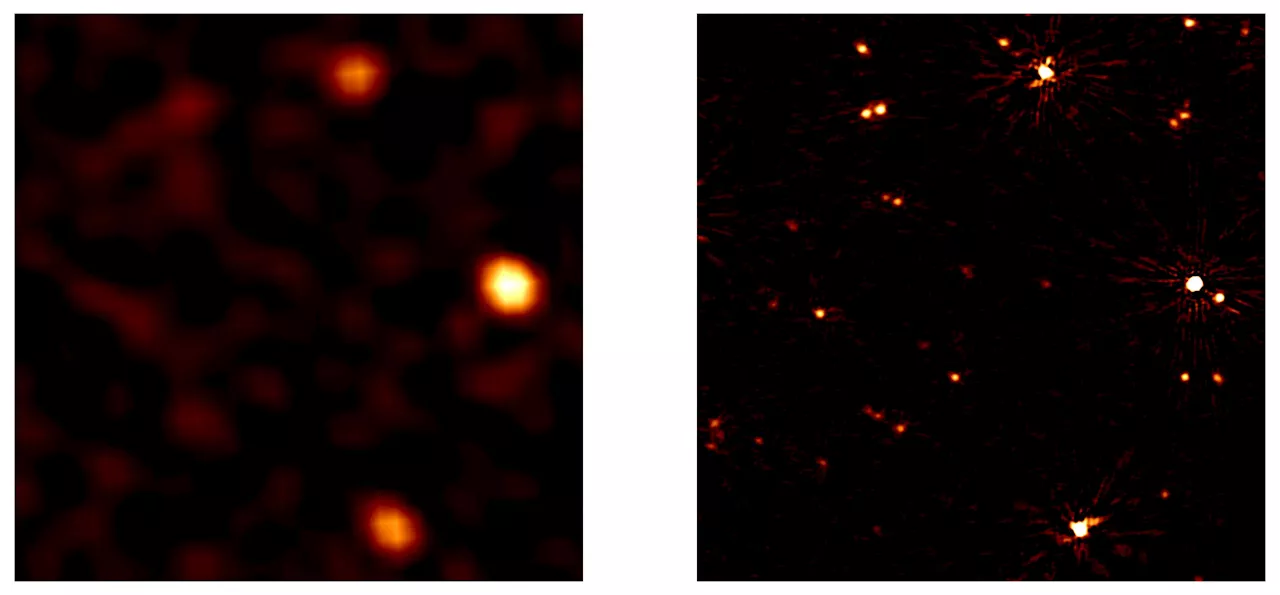 Radio astronomers bypass disturbing Earth's atmosphere with new calibration techniqueAn international team of researchers led by astronomers from Leiden University (Netherlands) has produced the first sharp radio maps of the universe at low frequencies. Thanks to a new calibration technique, they bypassed the disturbances of the Earth's ionosphere. They have used the new method to study plasmas from ancient black hole bursts.
Radio astronomers bypass disturbing Earth's atmosphere with new calibration techniqueAn international team of researchers led by astronomers from Leiden University (Netherlands) has produced the first sharp radio maps of the universe at low frequencies. Thanks to a new calibration technique, they bypassed the disturbances of the Earth's ionosphere. They have used the new method to study plasmas from ancient black hole bursts.
Read more »
 Astronomers propose a new stellar theory to explain the origin of phosphorusAstronomers have proposed a new theory to explain the origin of phosphorus, one of the elements important for life on Earth. The theory suggests a type of stellar explosion known as 'ONe novae' as a major source of phosphorus.
Astronomers propose a new stellar theory to explain the origin of phosphorusAstronomers have proposed a new theory to explain the origin of phosphorus, one of the elements important for life on Earth. The theory suggests a type of stellar explosion known as 'ONe novae' as a major source of phosphorus.
Read more »
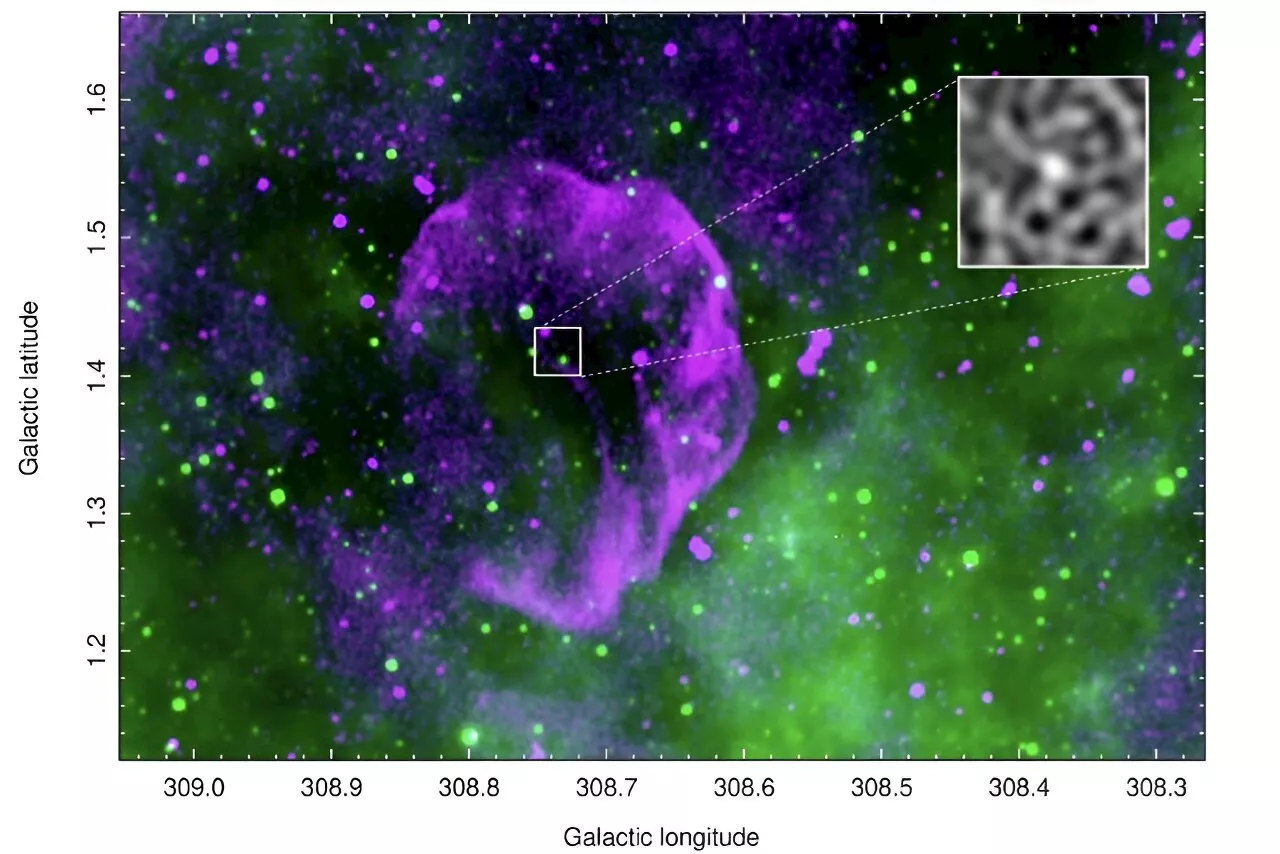 Raspberry in the sky: Astronomers discover a new supernova remnant candidateAstronomers from the Western Sydney University in Australia and elsewhere report the detection of a new supernova remnant (SNR) candidate. The newfound SNR candidate, dubbed 'Raspberry' due to its morphology, was identified in the near side of the Milky Way's Scutum-Centaurus Arm.
Raspberry in the sky: Astronomers discover a new supernova remnant candidateAstronomers from the Western Sydney University in Australia and elsewhere report the detection of a new supernova remnant (SNR) candidate. The newfound SNR candidate, dubbed 'Raspberry' due to its morphology, was identified in the near side of the Milky Way's Scutum-Centaurus Arm.
Read more »
 Astronomers discover new Earth-sized world orbiting an ultra-cool starAn international team of astronomers has detected a new, Earth-sized planet just 55 light years away, orbiting an ultra-cool red dwarf star.
Astronomers discover new Earth-sized world orbiting an ultra-cool starAn international team of astronomers has detected a new, Earth-sized planet just 55 light years away, orbiting an ultra-cool red dwarf star.
Read more »
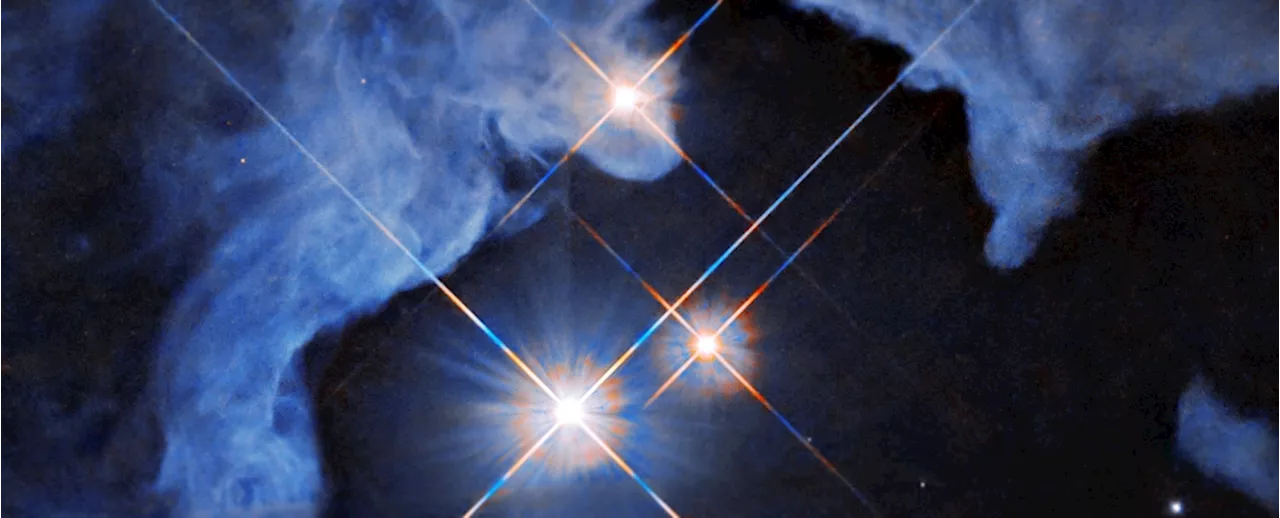 Astronomers Reveal Stunning New Image of Triple-Star System Gleaming in SpaceThe Best in Science News and Amazing Breakthroughs
Astronomers Reveal Stunning New Image of Triple-Star System Gleaming in SpaceThe Best in Science News and Amazing Breakthroughs
Read more »
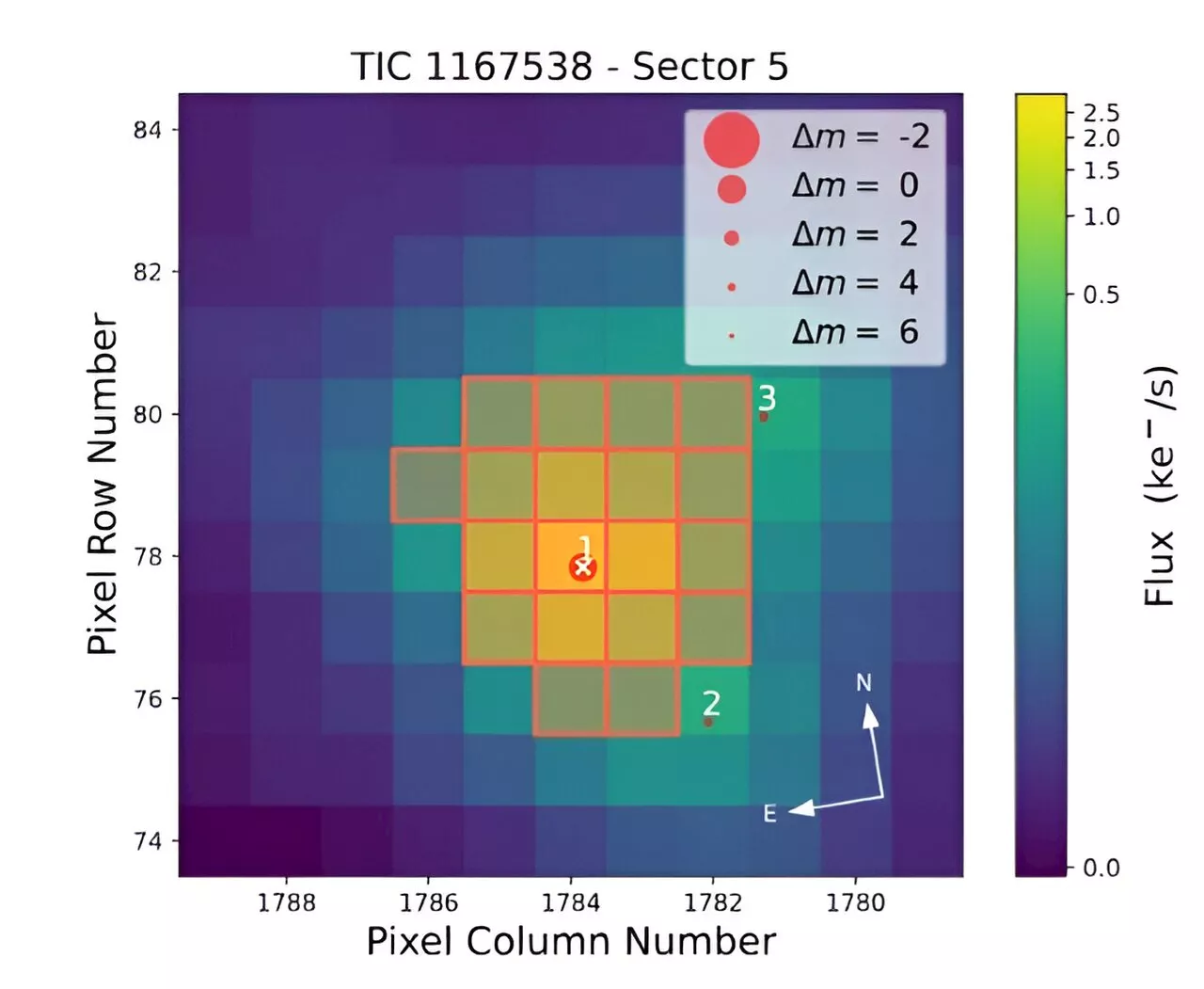 New Saturn-mass exoplanet detected by astronomersUsing NASA's Transiting Exoplanet Survey Satellite (TESS), an international team of astronomers has discovered a new Saturn-mass planet orbiting a solar-type star known as TOI-2447. The finding was reported in a research paper published May 12 on the pre-print server arXiv.
New Saturn-mass exoplanet detected by astronomersUsing NASA's Transiting Exoplanet Survey Satellite (TESS), an international team of astronomers has discovered a new Saturn-mass planet orbiting a solar-type star known as TOI-2447. The finding was reported in a research paper published May 12 on the pre-print server arXiv.
Read more »
